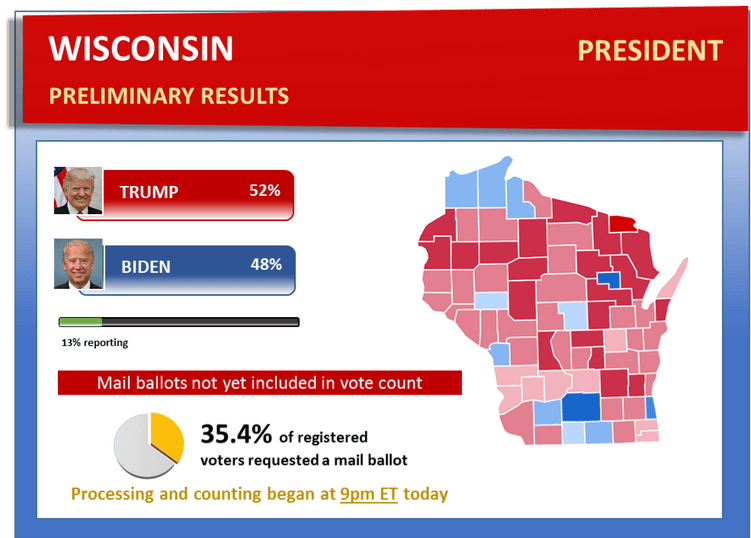A lesson one of us (Elizabeth) learned in journalism school: The best first sentences, also known as the lead, are vacuums. Great journalists use them to demand a slice of readers’ limited cognitive bandwidth and suck them into a story. If the story is well-written and interesting enough, your audience will read and understand it, lectured journalism school professors back when Facebook was merely a platform for students to connect.
A lesson that both of us have learned as applied behavioral scientists: our psychology influences how and whether we read the news in ways that can render even the most powerful lead moot. For instance, we constantly make unconscious decisions about what to focus on and what to ignore – not necessarily based on what’s most important to us, but on small cues in our environment. As a journalist, you can help news consumers zero in on key information by changing those environmental cues and presenting it at moments when they’re primed to listen.
Understanding how our psychology interacts with the news we consume is more important than ever as journalists plan election coverage during a season rife with misinformation that threatens the integrity of our democracy. Perhaps the most important piece of information news consumers will need to understand over the next month: November 3rd is the first day of what will likely be a prolonged election results period – and that’s a sign of the system working properly.
We can apply proven behavioral principles to help the public navigate these unusual times and prepare for what’s to come in November. Below, we’ve pulled together four simple insights journalists can use when covering the election, each paired with easy-to-use solutions aimed at building understanding and confidence in the upcoming election results.
Insight #1: Reset people’s expectations early and often. It’s certainly not news that emotions around this election are in overdrive. But as we inch towards November, emotional states will only intensify, making people more likely to support interpretations of the results that favor their candidates – regardless of veracity. To account for this tendency, we can help people internalize how votes will be tallied far in advance of November 3rd while they are still receptive to objective information. Rather than using phrases like “delayed results,” journalists should frame longer count periods as a signal of an accurate and secure count.
More specifically, you can offer a clear framework for anticipating which states may need more time to count votes. This framework could be built around three objective indicators: 1) the expected proportion of mail ballots; 2) the rules determining when officials can start processing and counting mail ballots; and 3) the closeness of the races being contested.
Illustration:
Insight #2: Keep key information simple, consistent, and redundant. People have a limited supply of attention in an already noisy media environment. To break through the din, go back to basics: concise messages that reset basic expectations, delivered over and again. Reinforce in as many ways as possible that accurate results may take several weeks to be fully counted. Redundant messages will make the new expectations and vote count timelines feel intuitive and familiar, and therefore, more likely to be perceived as true.
One approach to consider is affixing standard language to all political coverage from now through November.
Insight #3: Deliver clear cues to orient people’s expectations in real time. People constantly make unconscious assessments of situations based on subtle cues in their environment. When Election Day arrives, visual markers and other signals can help your audience navigate a deluge of information and maintain the accurate expectations that have been set.
Returning to the message that election day will be the first of many, try labeling November 3rd as “Day 1” of an ongoing election period. You could also preview important milestones happening in the week (or weeks) after the election to set accurate expectations.
Illustration:
Insight #4: Empower people with concrete information at the right time. People tend to hold on to existing beliefs and rationalize evidence to support them while rejecting information that doesn’t. This can place a higher burden on journalists to present results in a way that can’t be easily misconstrued. When in doubt, we recommend over-explaining election processes so they’re concrete and transparent. As with our previous insights, providing real-time details on what factors are causing drawn-out (or initially skewed) results equips your audience with a credible understanding of what’s happening in each state. That, in turn, could make them less likely to fall for false claims of election rigging or other attempts to challenge the integrity of the process.
Combine early vote counts with information on the number of outstanding mail ballots and any ballot processing policies that may prolong the results (e.g., a state’s deadline for receiving ballots from the post office).
Illustration:
For the two of us, the longer we’ve worked together, the more we’ve realized that behavioral scientists and journalists have a lot in common – and a lot we can learn from each other. Both fields, after all, are interested in excavating the often hidden explanations for why people do what they do. Both fields care about communicating crucial information clearly and concisely.
Journalism is designed to capture attention, slice through noise and illuminate truth. But in an election season rife with confusion and misinformation, this job is harder than ever. Making small changes to how coverage is framed, explained, and disseminated could make a big difference in how the public understands what’s happening in the election. And with the precarious state our democracy is currently in, the stakes couldn’t be higher.







